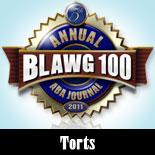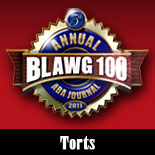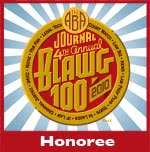
Today, Abnormal Use continues its series, “Abnormal Interviews,” in which this site will conduct interviews with law professors, practitioners and makers of legal themed popular culture. For the latest installment, we turn to Daniel Hartis, author of the relatively new book, Charlotte Beer: A History of Brewing In The Queen City. Why the author of a book about local beer? The answer is two-fold. First, we here at Abnormal Use love to experiment (in moderation of course) with the greatest craft beers our region has to offer. (You may recall that we once interviewed Adam Avery of the Avery Brewing Company regarding his company’s Collaboration Not Litigation Ale.). Second, Mr. Hartis, in his book, explores not just the modern culture of craft beer but also the evolution of the legal and political climate governing breweries in his mighty tome. That gave us just enough of a hook to interview him on our legal blog (which we probably would have done anyway, despite that hook, due to the cool topic). Mr. Hartis was kind enough to submit to a brief email interview, which appears as follows.
ABNORMAL USE: What is it about Charlotte, North Carolina these days that is so favorable to new breweries?
DANIEL HARTIS: Charlotte has become well-known as a city of transplants, and I think the current craft beer scene in the city is proof of that. Some of these transplants come from other cities with established beer scenes, and I think they expect that here and want to support the local breweries. Charlotte is one of the fastest-growing cities in the nation as well, which doesn’t hurt. We may not match Asheville in terms of numbers of breweries, but a larger population means we’ve probably got a larger number of craft beer drinkers.
AU: What do you think is the biggest legal obstacle to small brewers in North Carolina?
DH: Up until recently, I would have said zoning. Breweries could only exist in Charlotte’s industrial areas, which really limited them in terms of locations. The City of Charlotte’s planning department, however, just passed a microbrewery text amendment that allows breweries to exist in additional districts. Shortly after, The Olde Mecklenburg Brewery announced that they’d be moving into a larger building down the street, and The Unknown Brewing Company also leased a building just three blocks away from the stadium. Let’s hope that amendment also opens doors for Free Range Brewing, Sycamore Brewing, Regimental Brewing and Dukbone Brewing Co.
Intellectual property rights continue to be an issue, and several lawsuits have been filed in recent years over trademark disputes. Waynesville’s Headwaters Brewing Company rebranded to BearWaters Brewing Company earlier this year after receiving a cease-and-desist letter from Victory Brewing in Pennsylvania. Craft breweries will typically avoid litigation, but expect these trademark disputes to rise in relation to the number of breweries. After all, there are only so many hop puns out there!
AU: What do you think is the biggest obstacle to consumers of craft beer in North Carolina?
DH: To be honest, I think consumers have it pretty good here in NC. In addition to the state’s many great breweries, NC is also home to bars and bottle shops devoted to craft beer. Some of the nation’s best breweries distribute here as well, and if you compared our selection of brands to other states I think you’d come away impressed (SeekaBrew.com is a good site for this).
Speaking personally, I would like to see our breweries here in Charlotte and the rest of NC start packaging in 12 oz. bottles or cans. I understand why they don’t, as bottling and canning lines are expensive and an investment that many young breweries just can’t make. Down the road, though, I hope it’s a lot easier to go into your neighborhood bottle shop and pick up a six-pack of local beer, as opposed to a growler of it at the brewery.
AU: What do you think has been the biggest legal victory for the craft beer movement in the Carolinas?
DH: Without a doubt, the biggest legal victory for craft beer in North Carolina’s history was when Pop the Cap was passed in 2005. Before this point, only beers at 6 percent ABV or less could be sold in the state. This kept out not just a certain craft beer here or there, but entire styles of beer. Go into any bottle shop in Charlotte and I think you’d be hard pressed to find all that many under 6 percent, though session beers are on the rise (and I’m a big fan of lower-alcohol beers, but it’s nice to have options!).
AU: Historically, North Carolina, and Mecklenburg County, in particular, established Prohibition locally before the 18th Amendment became the law of the land nationally. How did we get from there to here?
DH: Before Prohibition, the nation was dotted with small, local breweries, and only recently did the country surpass the number of breweries it boasted prior to “the great experiment.” The reason breweries are popping up all over the country is the same reason they’re thriving in Charlotte: people want to support local businesses, and they want to enjoy a well-crafted beer. Part of it can also be attributed to the aforementioned transplants, I think. The Prohibition sentiment was especially strong in “the Bible belt,” and perhaps a more diverse population helped diminish those attitudes toward alcohol.
AU: How did you come to write a book about the Charlotte craft beer community?
DH: I founded CharlotteBeer.com in January of 2011 out of a desire to write about beer and a way to keep all of Charlotte’s beer information in one central place, for my needs as much as anyone else’s. I went to school for journalism, and so I always tried to maintain a standard of quality writing on the site, even if I was just throwing up a quick paragraph about an event. In the summer of 2012, The History Press – publishers of beer books for cities like Asheville, Baltimore and Charleston – approached me to see if there was enough of a history here in Charlotte to merit a book. At that point, my knowledge of the beer history here started from 2009, the year the Olde Mecklenburg Brewery came to town. After doing some research, though, I discovered a healthy portion of brewing history, especially in regards to the ‘90s breweries. I was excited to pursue that further and learn more, and so I agreed to take the project on.
AU: How has the expansion of social media assisted in the growth of the craft beer movement?
DH: I think social media plays a key role in the craft beer world, though perhaps not more so than in any other industry. When I started the blog a couple of years ago, Blair (@QueenCityBeer) and I were the only ones using the #cltbeer hashtag on Twitter. Over time it really caught on, and now many of the city’s breweries, bars, restaurants and bottle shops use it to share Charlotte beer news, specials or events. It allows them to reach the true beer geeks in the area that follow the hashtag, just as it allows them to share beer-related info with people who may be unfamiliar.
I’ve come to meet so many good people just by talking about beer on Twitter or Facebook. What might seem like a cursory chat on the Internet often develops in a “real-life” friendship, and I’m very grateful to have made so many friends this way.
BONUS QUESTIONS:
AU: Favorite North Carolina beer?
DH: With the number of breweries we have in the state producing great beer, it would be tough for me to choose just one. And that’s the beauty of our beer scene here in Charlotte, too: we are privileged to have a very diverse group of breweries that ensures there is something here for everyone.
AU: Favorite non-local beer?
DH: That really is a difficult question. If I had to choose a favorite, I think I’d go with Founders Brewing’s Kentucky Breakfast Stout (aka KBS). It’s brewed with coffee, chocolate and oatmeal, and then aged in bourbon barrels for a year. And yes, it’s as delicious as it sounds.
AU: Favorite style of beer?
DH: I can honestly say there’s not a style of beer I dislike. For that reason, it’s tough for me to nail down just one favorite style. The mood I’m in, the weather, what I’m doing at the time – these can all dictate the type of beer I drink. That being said, I really enjoy stouts, Baltic porters and smoked beers.
AU: Favorite beer related website?
DH: I regularly visit Beer Pulse for beer news, Oh Beautiful Beer for beer design and Good Beer Hunting for its unique photos and writing. Oh, and First We Feast offers a really fun look at beer (and food) through a pop culture lens.
AU: Favorite song about beer?
DH: It’s not exactly a testament to the responsible enjoyment of fine beverages, but I’ll go with Sublime’s “40 oz. to Freedom.” I was a fan of Sublime well before I could (legally) drink, so it’ll always hold a special place in my heart.
BIOGRAPHY: Daniel Hartis is the founder of CharlotteBeer.com and the author of Charlotte Beer: A History of Brewing in the Queen City. His next book, Beer Lover’s The Carolinas, will be published by the Globe Pequot Press in January 2014. When he’s not writing about beer, he enjoys spending time with his wife and two children. You can follow him on Twitter at @CharlotteBeer.



















